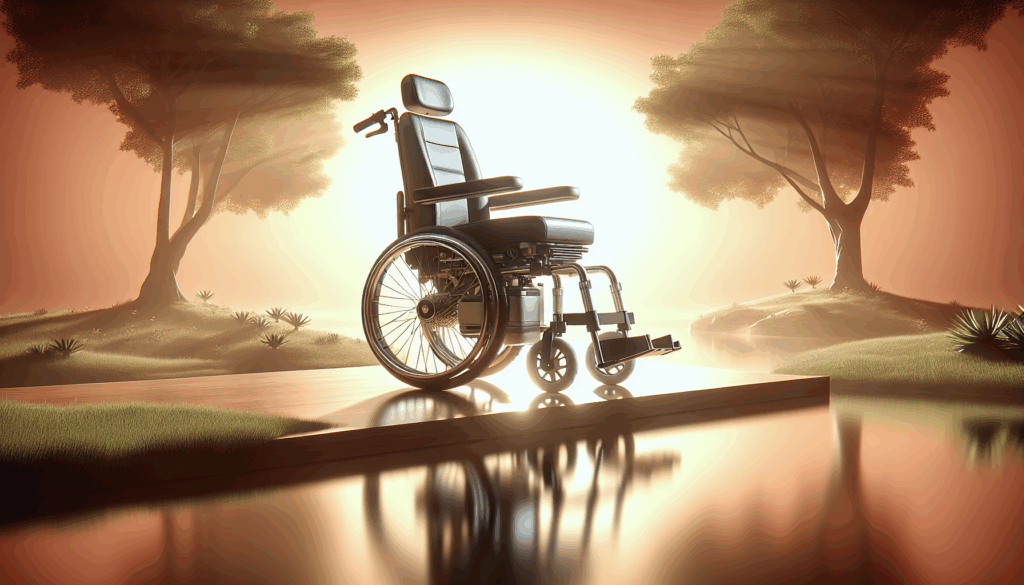
Electric wheelchairs have revolutionized mobility for individuals with varying physical abilities, offering enhanced freedom and independence. With a range of options available, understanding the differences between models such as the Edegree EW6, Edegree EW1, and Stonbike TU-04 is essential in selecting the right fit for your needs. Each electric wheelchair comes with unique specifications, battery types, and performance characteristics, which can greatly influence user experience and satisfaction. This article dives into a comparative analysis of these electric wheelchairs, shedding light on their distinct features and the benefits they bring to enhance the quality of life for users.
Types of Electric Wheelchairs: A Brief Overview
Electric wheelchairs come in various models, each designed for specific needs and preferences. For instance, the Edegree EW6, with its lithium battery, provides a range of 10-15 km per charge. Weighing in at only 14.8 kg, it is relatively lightweight and has a climbing ability of less than 10 degrees, making it an excellent choice for indoor use. With a maximum load capacity of 100 kg and dual motor technology, it offers a top speed of 8 km/h.
In contrast, the Edegree EW1 uses a lead-acid battery and has a slightly longer range of 20 km. However, it is heavier at 38 kg and can manage a steeper climb of 13 degrees, making it suitable for moderate outdoor terrain. This model also features a robust dual motor setup, achieving a maximum speed of 6 km/h.
Another noteworthy option is the Stonbike TU-04, which possesses an impressive 25 km range thanks to its lithium battery and has a faster charging time of just 3-5 hours. Weighing 28 kg and sustaining a maximum load of 150 kg, it stands out due to a superior climbing ability of 25 degrees, catering more to users who may navigate varied landscapes. Each of these electric wheelchairs offers unique advantages in performance and portability, ensuring that individuals can find a model that best suits their lifestyle and mobility requirements.
Comparative Analysis: Edegree EW6 vs Edegree EW1
When comparing the Edegree EW6 and Edegree EW1 electric wheelchairs, several distinctive features emerge that cater to varying user needs. The Edegree EW6 has a range of 10-15km per charge, powered by a lightweight lithium battery, which allows for a faster charging time of 6-8 hours. Weighing only 14.8kg, it is easy to maneuver, making it ideal for daily commutes or short outings.
However, while its maximum forward and reverse speeds are slightly higher at 0-8km/h compared to the Edegree EW1‘s 0-6km/h, the climbing ability of the EW6 is slightly less impressive, rated at less than 10°, which may limit access to steeper terrains. With a dual motor setup of 24v190w, its performance is suitable for flat surfaces and gentle inclines while supporting a max load of 100kg.
Conversely, the Edegree EW1 has the advantage of a greater range per charge at 20km, making it more suitable for longer excursions. Although the EW1 uses a lead-acid battery, which is relatively heavier at 38kg, its climbing ability excels at 13°, making it a better choice for users who need to navigate hilly environments. The EW1’s dual motor setup of 24v250w offers similar 5-speed gear options as the EW6, delivering reliable performance. Ultimately, the choice between the two models depends on individual lifestyle requirements, preferred speed, and terrain considerations.
Stonbike TU-04: A Strong Contender in Performance
The Stonbike TU-04 emerges as a strong contender in the realm of electric wheelchairs, thanks to its robust performance features that set it apart from the competition. With a range per charge of 25km, this wheelchair is powered by a dual motor 24v250w, allowing for a steady forward and reverse speed of up to 6km/h. Its climbing ability of 25° enables users to navigate various terrains with relative ease, providing users with the independence they seek.
Additionally, the lightweight design of 28kg makes it more manageable without compromising on strength and stability, supporting a maximum load of 150kg. The quick charging time of 3-5 hours further enhances convenience, making it an ideal choice for those who need mobility solutions without the hassle of long waiting periods for battery life to recharge.
Beyond just the impressive specs, the Stonbike TU-04 exemplifies what an ideal electric wheelchair should offer: comfort, reliability, and versatility. With gear options for users to adapt to different speeds and terrains, it accommodates a wide range of preferences and needs. This electric wheelchair not only promotes a sense of freedom but also opens doors for improved day-to-day activities, whether it’s running errands or enjoying leisure time outdoors. For anyone considering an electric wheelchair that balances performance and functionality, the Stonbike TU-04 stands out remarkably.

Understanding Battery Types: Lithium vs Lead-Acid
When choosing a battery for an electric wheelchair, understanding the differences between lithium and lead-acid batteries is crucial. Lead-acid batteries, traditionally used for many mobility devices, are more affordable initially and have proven reliability. However, they are heavy, require regular maintenance, and have a shorter lifespan, which can impact the overall performance and ease of use of the wheelchair. In contrast, lithium batteries, though more expensive upfront, offer significant advantages: they are lighter, charge faster, have a longer lifespan, and require little to no maintenance. This makes lithium batteries a preferred choice for users seeking greater mobility, longer travel range, and less frequent battery replacements.
Additionally, the reduced weight of lithium batteries can make the wheelchair easier to maneuver and transport. Overall, while lead-acid batteries may still be suitable for users on a tight budget or with minimal mobility needs, lithium batteries typically provide a superior experience for long-term and active use.
Range and Speed: How Performance Affects Mobility
When it comes to electric wheelchairs, range and speed are critical factors that significantly impact mobility and overall user experience. For example, the Edegree EW1 offers a range of 20 kilometers per charge, operating at speeds of up to 6 km/h, while the Edegree EW6 has a shorter range of 10-15 kilometers and can reach speeds of 8 km/h. In comparison, the Stonbike TU-04 boasts the longest range at 25 kilometers and maintains a speed limit akin to the EW1, capped at 6 km/h. T
hese differences in range and speed determine how far users can travel comfortably without needing to recharge, which is vital for both daily errands and longer excursions. Moreover, climbing ability is another performance aspect that influences usability in real-world scenarios. The Edegree EW1 is capable of conquering inclines of up to 13 degrees, while the Stonbike TU-04 can tackle steeper slopes of 25 degrees, providing greater versatility for users navigating varied terrains.
On the other hand, the Edegree EW6 is constrained to a 10-degree climbing ability. Ultimately, the specifications of an electric wheelchair can greatly shape the mobility experience, making it essential for prospective buyers to consider these factors closely to find the right fit for their needs.
Weight and Max Load Capacity: Choosing the Right Model
When it comes to selecting the ideal electric wheelchair, weight and maximum load capacity play crucial roles in determining comfort and usability. For instance, the Edegree EW6 weighs only 14.8kg including the battery, making it a lightweight option that is easy to maneuver. It can carry a maximum load of 100kg, making it suitable for a range of users. In contrast, the Edegree EW1, though heavier at 38kg, offers the same load capacity but features a lead-acid battery which impacts the overall weight and drive experience.
On the other hand, the Stonbike TU-04 stands at a middle ground with 28kg and a higher max load capacity of 150kg, thereby catering to heavier users while still being comparatively manageable in terms of weight. Understanding these factors is essential for making the right choice, as it not only affects mobility but also the long-term usability of the electric wheelchair. A lightweight model like the Edegree EW6 provides ease of transportation, while models like the Stonbike TU-04 support heavier users without compromising performance. Therefore, when considering electric wheelchairs, it’s essential to evaluate each option’s weight and load capacity to ensure it meets your personal needs and enhances your mobility experience.
Climbing Ability: Navigating Different Terrains
When considering electric wheelchairs, one crucial characteristic to evaluate is their climbing ability, as it significantly affects maneuverability in various terrains. For instance, the Edegree EW1 can manage inclines up to 13°, providing a reliable option for users navigating moderate hills or ramps. In contrast, the Stonbike TU-04 boasts an impressive climbing ability of 25°, making it ideal for steeper gradients or uneven surfaces. This capability is enhanced by its dual motor system, which offers substantial power for tackling challenging routes, allowing users greater freedom and independence during their journeys.
Additionally, the Edegree EW6 offers a climbing ability of less than 10°, suitable for flat terrains or gentle slopes. Each model’s climbing capacity plays a vital role in ensuring that the user can navigate diverse environments with ease. Users who prioritize versatility in movement should carefully consider these features, as a suitable electric wheelchair can enhance their mobility experience significantly, offering freedom in both urban and rural settings. Whether it’s tackling hills on a shopping trip or navigating curbs in a park, selecting the right wheelchair with appropriate climbing ability is essential to maximizing the benefits of electric mobility solutions.
The Benefits of Electric Wheelchairs in Daily Life
Electric wheelchairs have transformed mobility for many individuals, offering a range of benefits that significantly enhance daily life. One primary advantage is the independence they provide, allowing users to navigate various environments without requiring assistance. With models like the Edegree EW6, which boasts a range of 10-15 km per charge, users can perform errands or visit friends with ease. The dual motor system not only enhances the wheelchair’s performance but also allows users to select from five speed modes, adapting their pace to different situations. Furthermore, electric wheelchairs like the Stonbike TU-04, with a greater range of 25 km and a climbing ability of 25°, showcase the versatility essential for overcoming daily challenges in both urban and suburban settings.
In addition to practical mobility, electric wheelchairs also promote physical well-being through enhanced ergonomics. Models are designed with user comfort in mind, reducing the strain associated with manual handling. For instance, the Edegree EW1 weighs 38kg, which is heavier but still manageable for transporting, supporting individuals with varying physical capabilities. This means less fatigue and more energy to engage in social or recreational activities, ultimately leading to a better quality of life. With features like a maximum load capacity of 100kg and varying climbing abilities, electric wheelchairs cater to diverse user needs, ensuring everyone can experience increased freedom and improved health results in their daily routines.

Final Thoughts on Electric Wheelchairs
In conclusion, electric wheelchairs offer diverse options that cater to different needs and preferences, as evidenced by the variations among models like the Edegree EW6, Edegree EW1, and Stonbike TU-04. Whether you prioritize range per charge, weight, or climbing ability, each wheelchair presents unique advantages. With their dedicated features such as speed modes and motor strength, electric wheelchairs provide not only mobility but also the freedom to explore various terrains comfortably. Investing in the right model can significantly enhance your quality of life, enabling greater independence and the ability to engage in daily activities with ease.
As you decide on the best electric wheelchair for your circumstances, consider factors such as battery type, charging times, and maximum load to ensure that your choice aligns with your lifestyle. The advantages of electric wheelchairs go beyond mere transport; they empower users to gain back control of their mobility and experience life more fully. With an informed decision, you’ll be adopting a practical solution that enhances your everyday life, proving that the right electric wheelchair can indeed change your world for the better.

I think the lightweight design is a major attractant for many people, makes navigation in crowded areas much easier, thanks for sharing.
I completely agree with you, Ethan! A lightweight design indeed makes navigation in crowded areas much safer and easier. It’s also easier to store and transport, which is a significant advantage for many users. At Eko Life Malaysia, we understand the importance of convenience and mobility, which is why we offer a wide range of affordable and reliable electric wheelchairs that cater to different needs and lifestyles. If you have any questions or concerns about electric wheelchairs or would like to know more about our products, please don’t hesitate to contact us at [email protected] or +60 3-7890 3042. We’re here to help!
It’s essential to weigh the advantages and disadvantages, cost included, before making a final decision, appreciate the analysis.
Thank you for your insightful comment, Kiran! We completely agree that weighing the advantages and disadvantages, including the cost, is crucial before making a final decision. At Eko Life Malaysia, we strive to provide accurate and comprehensive information to help our customers make informed choices. If you have any further questions or concerns about electric wheelchairs, please don’t hesitate to reach out to us at [email protected] or call us at +60 3-7890 3042. We’re here to help.
I’ve been considering an electric wheelchair for my mum, thank you for breaking down the pros and cons of each model.
Dear Elaine, we’re glad that our comparison helped you in making an informed decision. We understand that choosing the right electric wheelchair can be overwhelming, especially with the variety of options available. If you’re interested in learning more about our products or would like to speak with a specialist, please don’t hesitate to reach out to us at [email protected] or +60 3-7890 3042. We’d be happy to assist you in finding the best electric wheelchair suitable for your mother.